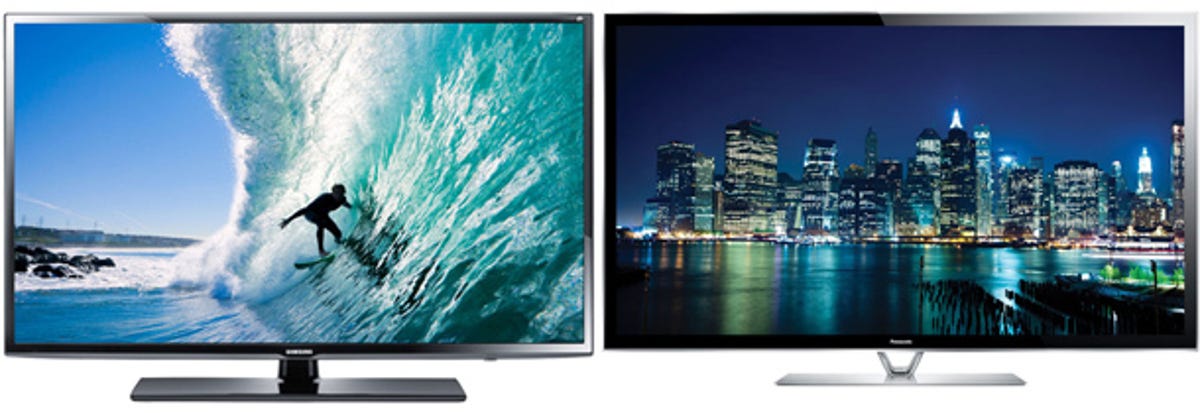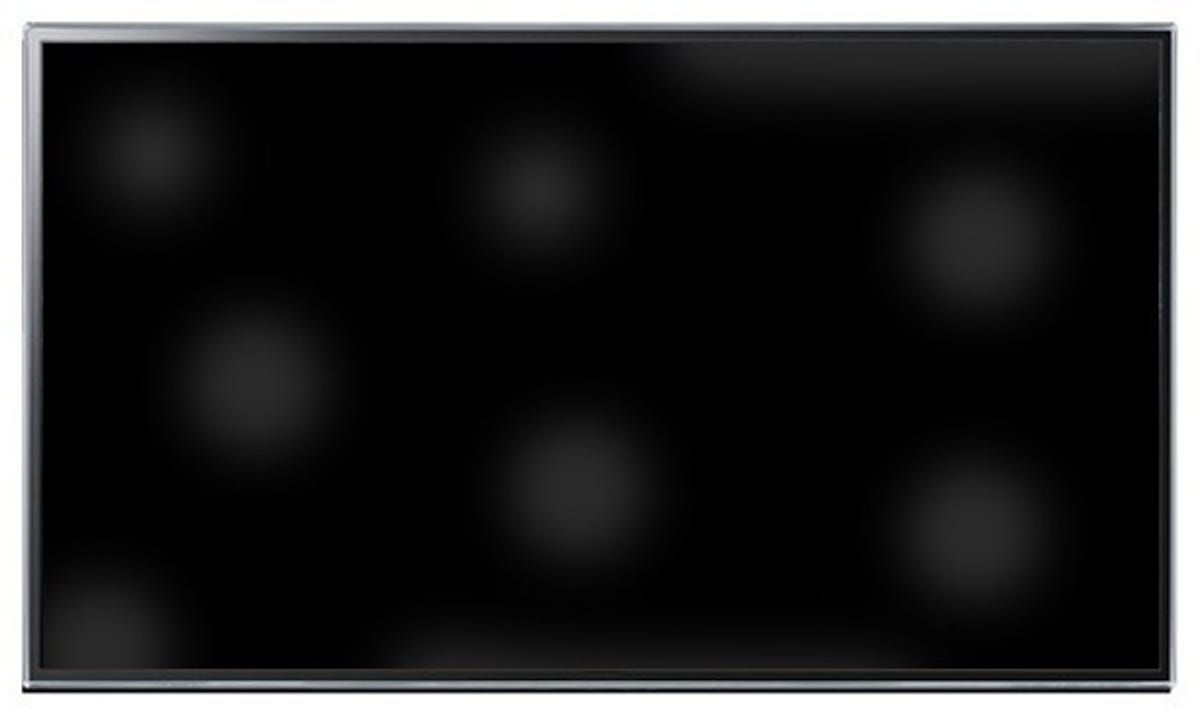
Geoffrey Morrison/CNET
For many years now, plasma televisions have been the standard for picture quality and value. Sure, there have been some great-looking LCDs, but for the best overall image, the best plasmas couldn’t be beat. Now plasma is going away for good.
OLED certainly can beat plasma, but we’re still years away from OLED TVs being affordable.
In the meantime we’re stuck with LCD. So is it possible, through various tricks and advancements, for LED LCD to look as good as plasma? Maybe.
Before we get started, it’s worth taking a look at LED LCD vs. OLED vs. plasma to see how each technology breaks down.
Contrast ratio By far the single most important aspect of the overall picture quality of an image, contrast ratio is the difference between the brightest part of an image and the darkest. An LCD screen can get much brighter than plasma, and can also create a very dark image. But it has a tough time creating bright whites and dark blacks at same time on the same image (like plasma and OLED can). As such, especially seen side by side, plasma and OLED will seem to have more depth and richness to their images than LCD.


Geoffrey Morrison/CNET
Well, most LCDs. Full-array local dimming, in which zones of the screen can be dimmed to make that part of the image darker, can radically improve the perceived contrast ratio. While this technology has been scarce the past few years (edge-lit local dimming is more common, and not as effective — although it still helps a lot), manufacturers are starting to talk about it again, but with a new name: High Dynamic Range. Multiple companies are talking about HDR, including Dolby, and the results we saw at CES 2014 were impressive. Tricks and tweaks learned over the years have resulted in very effective local dimming, with few of the dreaded halo and blooming artifacts of early local-dimming models.
This shows great promise in creating an apparent contrast ratio as good if not better than plasma (but maybe not quite as good as OLED).
For more on this, check out my articles “Contrast ratio (or how every TV manufacturer lies to you)” and “High Dynamic Range: Dolby Vision, X-tended Dynamic Range Pro, and beyond.”
Motion blur One of the biggest drawbacks to LED LCDs, at least for those who are bothered by it, is motion blur. This is when an object on the screen (or the whole screen if the camera pans) blurs when it’s in motion. This detail-softness-detail-softness pulsing, almost like the camera is going out of focus, is noticeable by many, and annoying to some.


Geoffrey Morrison/CNET
Plasma televisions don’t have the same issues with motion blur. Higher refresh rates like 120Hz and 240Hz were primarily developed to help minimize motion blur; however, in so doing, they often cause the loved/despised Soap Opera Effect, which for many is not a valid trade-off.
However, there is another way. Black Frame Insertion does what it sounds like, inserting a black frame in between the video frames. You don’t notice the image going dark, but because of how your eyes see the image, this flashing actually helps minimize motion blur.
This isn’t a new method, but most implementations either made the image too dark, or sometimes caused the image to flash noticeably. The current generation of OLED has the same issue as LED LCD, but the added brightness allows the black-frame insertion mode to work beautifully. In David Katzmaier’s testing and my own, the image from Samsung’s OLED had motion blur without BFI, and almost none with it, without an excessive drop in light output. Perfect.
At CES 2014, we saw a preview of Samsung’s latest version of this for its LED LCDs. Here too there was no significant loss of light, but a radical reduction in motion blur. We look forward to testing this out in Samsung’s 2014 models.
Related stories
- Best TVs list
- Why all HDMI cables are the same
- Active 3D vs. passive 3D: What’s better?
- How big a TV should I buy?
- Why Ultra HD 4K TVs are still stupid
- What is refresh rate?
- Audiophile Odyssey: Behind the scenes at B&W, Meridian, and Abbey Road Studios
Uniformity Brightness uniformity has been another issue with LED LCDs. This is where parts of the image are brighter, or darker, than others when they’re not supposed to be. Imagine an image that is supposed to be solid black. On many LED LCDs, parts of this black image will have a mottled look, or edges will be brighter than the center, like someone is shining a flashlight from the edge of the screen — which is not too far from the truth of how edge-lit LED LCDs work, actually.


Geoffrey Morrison/CNET
This is a harder nut to crack, as it’s less a technological fix and more a manufacturing fix. According to some off-the-record explanations I’ve been given, uniformity all comes down to how the panels are inserted into the chassis. With the rapid speed of TV manufacturing, this isn’t as precise as it could be. Making it more precise, and therefore improving uniformity, takes additional time, which means additional cost per TV. Is this something consumers are really clamoring for? Complaints on Internet forums tell one story, and our man Katzmaier is bothered by it as well. The number of LCDs sold last year tells a different story.
We’ll have to see if this improves in coming years, as it hasn’t gotten much better in recent memory.
Viewing angles Another LCD drawback. Most LCDs, at least of the TV variety (meaning, not tablets or smartphones), look worse as you move away from dead center. Move a seat or two to the left or right, and the contrast decreases, and sometimes the colors shift. Many times it’s even worse if you’re above or below the center of the screen, like if you want to mount a TV above a fireplace.
Plasma doesn’t have this issue, but certain LCDs don’t either. Those based on IPS, or In-Plane Switching, look almost as good off-axis as plasma. However, IPS-based LCDs, used by LG and some others, also have significantly worse contrast ratios. This is not a reasonable trade-off. Could an IPS panel, with some incredible local dimming, be the best of everything? Hard to say, but there’s only so much local dimming can do when the native contrast of the panel is so low (often 25 percent or less than other LCD technologies). I’d be interested to see one, though.
As far as other LCD technologies go, poor off-axis picture is a limitation of the technology, and it’s safe to say LCD will never be as good as plasma or OLED in this regard. We’ll have to see if new technologies arrive that improve this aspect.
Bottom line One of the most exciting takeaways from CES 2014 for me is that TV manufacturers are still pursuing better and better picture quality, despite a move away from the plasma technology that provided the cheapest way to get better picture quality.
A comparison could be made, perhaps, to the automotive world. Every time gas mileage requirements go up, there are hysterical prophesies about the death of the performance car. Yet now, despite a move to smaller and smaller engines, performance has never been greater. The move away from easy horsepower (big V-6 and V-8 engines) has caused engine designers to make smaller 3- and 4-cylinder engines to work better, and the result is similar power yet better fuel economy. A win-win for everyone.
LED LCD needs similar Band-Aids to compete for picture quality with plasma, and it’s heartening to see manufacturers doing just that. The high-performance TV may live on, and it might not even have to be OLED. It might be liquid crystal. We shall see.
Got a question for Geoff? First, check out all the other articles he’s written on topics like why all HDMI cables are the same, LED LCD vs. plasma, active versus passive 3D, and more. Still have a question? Send him an e-mail! He won’t tell you what TV to buy, but he might use your letter in a future article. You can also send him a message on Twitter @TechWriterGeoff or Google+.




